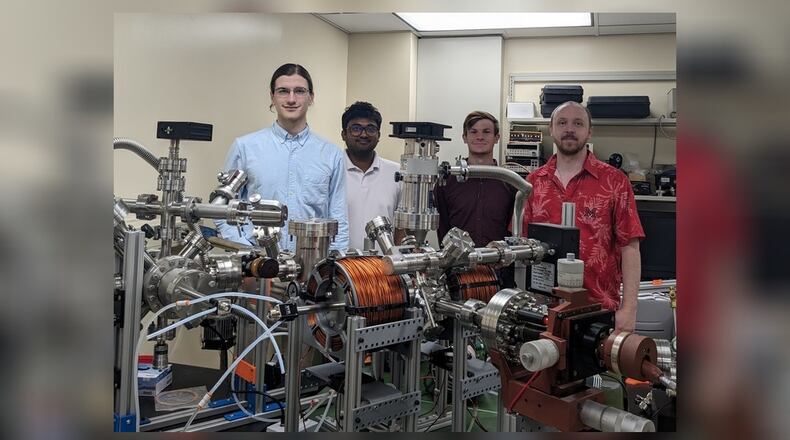Corbett, who previously worked for the AFRL’s Agile Electronics Team, said the microscope gift will further allow his Miami students to explore the mysteries of atoms.
“The (microscope) donated by AFRL will push the group’s microscope cadre to the next level of research capability by enabling them to take pictures of individual atoms and probe the quantum mechanical phenomena at the atomic level,” Corbett stated in an announcement from Air Force Research Laboratory Public Affairs.
The partnership is the latest example of a trend in recent years of Miami’s expanding its ties with private industry and governmental agencies while incorporating a variety of school departments at Butler County’s largest employer.
Besides Miami’s main Oxford campus, the university also has regional campuses in Hamilton and Middletown — both also featuring various business partnerships —as well as a Learning Center in West Chester Twp.
The AFRL is the primary scientific research and development center for the Department of the Air Force. AFRL plays an integral role in leading the discovery, development and integration of affordable warfighting technologies for our air, space and cyberspace force.
The AFRL has a workforce of more than 12,500 across nine technology areas and 40 other operations across the globe, said officials.
Jeremy Gratsch, technology transfer and partnerships lead for AFRL’s Materials and Manufacturing Directorate, said when a piece of research equipment is retired, they try to find an educational institution that can put it to good use within their own programs.
“AFRL uses these agreements to provide students additional access to state-of-the-art equipment with the hopes of educating and inspiring the future STEM workforce,” said Gratsch. “We hope this will also get students thinking about science and technology careers with the Air Force, and possibly with AFRL.”
As part of his work with AFRL, Corbett characterized thin-film materials used to create optical sensors, that utilized polarized light, which could detect visually camouflaged man-made objects.
“The Corbett Research Group employs a wide breadth of individuals at various stages of preparation for the workforce,” said Corbett. “The instrumental techniques and scope of the research prepare individuals with a strong background in hands-on, state-of-the-art experimental techniques in materials growth, device fabrication and micro-to-atomic scale measurement.”
According to Corbett, the group specializes in next-generation materials research that exploits special quantum mechanical phenomena within materials to help bring about the quantum revolution in various technological fields. Materials such as these will enhance the ability to make ultra-fast computers and GPS denied navigation, as well as detect new levels of brain activity and camouflaged objects.
About the Author
